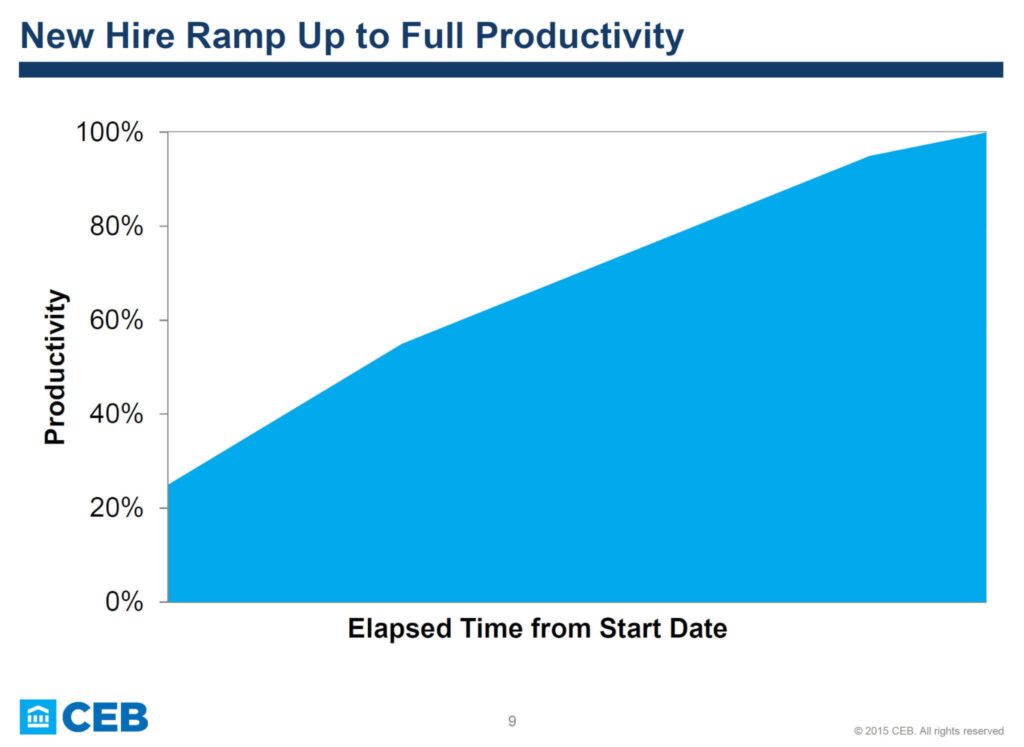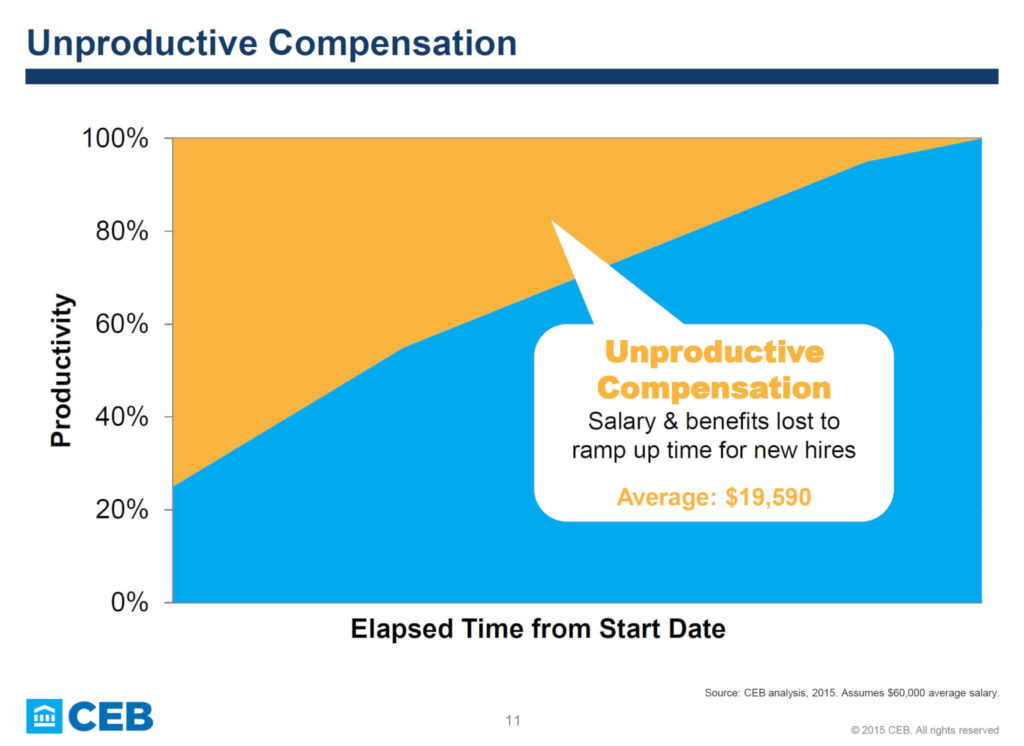Human relationships are messy. Hiring and onboarding aren’t always a cakewalk. Nor are performance reviews. And the act of punishing or firing someone can take an emotional toll on all parties involved.
Nonetheless, organizations face increasing pressure to maximize profit and minimize loss by leveraging employee data. In other words, today’s employers frequently need to set aside the emotional, messy component of leading teams and neatly quantify their employees—their human capital.
With that in mind, I’d like to introduce you to a new way to think about human capital expenses: unproductive compensation.
Unproductive compensation is basically the amount of money you’re paying out in salary that’s wasted by an employee who’s not fully productive. I’m not insinuating that the employee is lazy; more likely, they’re uninformed and don’t quite know the ropes yet. Organizations that experience frequent turnover see a lot of unproductive compensation.
Let’s put some costs to this—it might just jumpstart you into taking action. Research conducted by CEB (now Gartner) has shown that it takes 8 months for an employee to reach full productivity:

Now, the time horizon might not be 8 months for your organization, but regardless, your chart would most likely look similar to this ones.

This chart gets really interesting when you look at the negative space—let’s fill that in with yellow. This is how much you’re paying an employee for time in which they’re not being productive.
Using $60,000 as an average salary and 8 months as the amount of time it takes to get up to speed, The researchers pegged unproductive compensation at $19,600 per employee. Again, your numbers may be higher or lower based on your average salary and time to productivity.
But here’s where we go nuclear: that $19 grand was per employee. How many employees do you hire in a year?
- 10 employees? That’s $190,000.
- 30 employees? Now we’re talking about $570,000.
I don’t know about you, but that much money not being put to good use would make me want to do something—two things, to be specific:
- Reduce the time to productivity (so we don’t have to pay out so much in unproductive compensation),
and - Reduce turnover (so that unproductive compensation doesn’t have to get paid out as often).
The good news here is that any employer has a key play to bring these costs down—and it involves your onboarding program.
Over the next few weeks, we’ll be talking about tactics you can employ to start to eat away at these costs. Join us again here soon for another article about unproductive compensation and how you can use your onboarding program to fight back.
